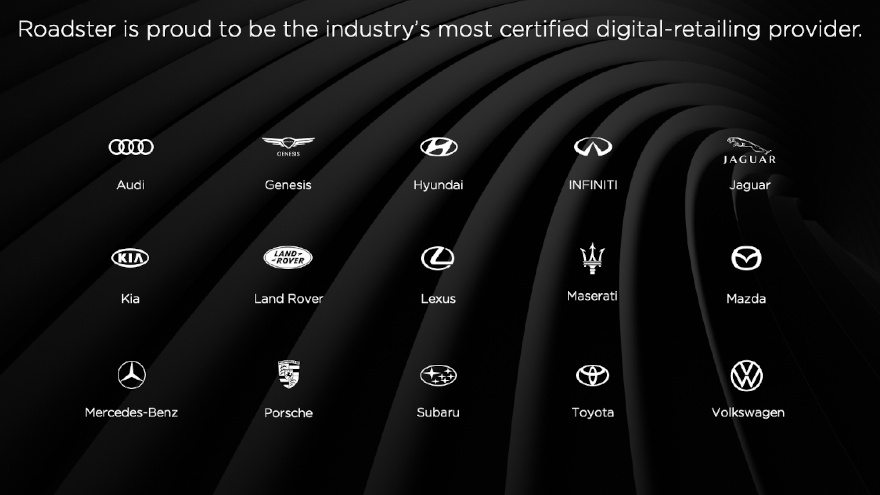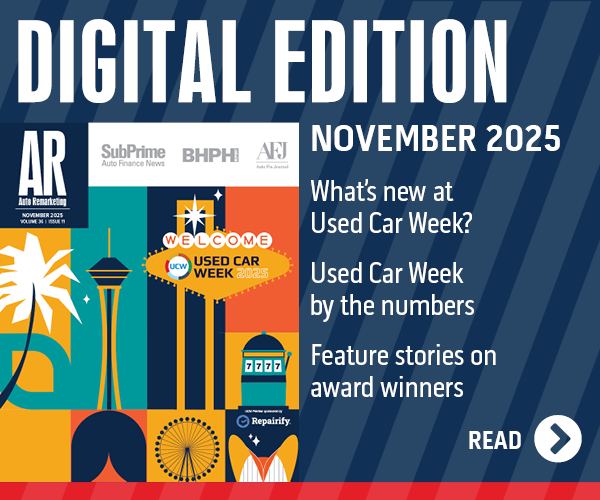Roadster: Line blurring between OEM, dealership

Image courtesy of Roadster.
By subscribing, you agree to receive communications from Auto Remarketing and our partners in accordance with our Privacy Policy. We may share your information with select partners and sponsors who may contact you about their products and services. You may unsubscribe at any time.
CARY, N.C. –
Amit Chandarana describes Roadster as an omni-channel commerce platform.
“Our technology as a digital retailing tool has always been there to facilitate the online sale of a vehicle or the in-store sale of a vehicle,” said Chandarana, who is senior vice president of Roadster.
The company recently announced that it is the most certified digital retailing service, now working with 14 OEMs. Those include mainstream OEMs Hyundai, Kia, Mazda, Subaru, Toyota, and Volkswagen and luxury automakers Audi, Genesis, Infiniti, Jaguar/Land Rover, Lexus, Maserati, Mercedes-Benz and Porsche.
As the company made that announcement, it also discussed trends it is seeing in the industry, and Chandarana said one of those is that several OEMs are implementing initiatives that blur the line between the OEM and the dealership.
To show how that line is being blurred, Chandarana provided an example of the car-buying process of today. A prospective buyer visits an OEM site such as Toyota.com. The buyer finds a Camry that interests them.
With that process, no opportunity exists to determine if the buyer can actually find the right vehicle to fit his or her needs.
Subscribe to Auto Remarketing to stay informed and stay ahead.
By subscribing, you agree to receive communications from Auto Remarketing and our partners in accordance with our Privacy Policy. We may share your information with select partners and sponsors who may contact you about their products and services. You may unsubscribe at any time.
“Really all it is, is a lead-based economy where I can submit a lead to a dealer, and the entire process is picked up again,” Chandarana said.
He said at that point, the dealer will call the prospective customer or start e-mail correspondence with the customer with generic lead responses. The dealer will eventually try to take you back into a process that was different than the process you thought you were starting, Chandarana said.
Fewer hurdles to jump
But now, with the latest trend of blurring the line between the OEM and dealership, if the buyer believes he has found a Camry that fits his needs, he can provide just a bit of information and get directly into the commerce platform of the dealership, such as Longo Toyota, for example, and start the buying process.
At that point, Chandarana said, the buyer can get answers to his questions: Can I afford this? Does it come in a different color? Can I find out the value of my trade-in? Do I need to add a service protection plan?
That takes place “all with penny-perfect information with real rates, rebates and incentives,” Chandarana said. “And it’s essentially a seamless process now vs. this fragmented process where its just a lead-based economy.”
He went on to say that new trend is “starting to align the ecosystem,” with OEMs getting more data on how the car is performing and the dealership telling the customer about the vehicle’s service records and alerting the customer that his vehicle needs maintenance.
“It’s really the same thing that takes place on the sales side, with the OEM gathering more information about a customer who is looking to purchase a vehicle and then seamlessly passing that to a dealership, and the dealership is actually continuing your sales process vs. starting the whole thing over,” Chandarana said. “So less hurdles throughout the process.”
Line-blurring trend started with the virus
Roadster chief executive officer Andy Moss said no one would ever wish for tumultuous times such as what occurred worldwide with the COVID-19 pandemic.
“But it really catapulted us,” Moss said.
He said adoption of digital retailing technology accelerated as the pandemic set in.
“Dealers had the ability to do business, but they had to do business in a very remote, digital manner,” he said.
He went on to say Roadster has seen strong growth at the retail level and also in its activity with OEMs.
More than 1,600 dealerships are using Roadster’s Express Storefront technology and adding additional Roadster products to create a more efficient sales process.
Chandarana noted a trend that OEMs are dedicating substantial resources to modernizing the vehicle in areas such as telematics, with applications showing the vehicle’s performance and service history.
What’s lacking, he said, is customer experience in the buying process. Car companies help generate traffic and leads, and they create awareness. But then they hand everything off to the dealer, and the dealer only knows about leads and the sale.
Over the past year, OEMs have sought to have an impact on the customer journey, Chandarana said.
“So the breadcrumbs of the buying process,” Chandarana said.
He went on to say the OEMs want the buying process as a customer journey to match the quality of the vehicle that they are building.
“And we’re really starting to become a component of that,” Chandarana said. “Because we digitize the entire sales process at the dealer level, the OEMs are counting on being able to garner that information and use that insight with their dealers.”
Regarding Roadster’s news of certification as a digital retailing provider by 14 OEMs, Chandarana said that as OEMs certify Roadster, Roadster shares data with the OEMs and dealers. The OEMs get what Chandarana described as a helicopter view of the entire sales process.
He said the process is similar to what takes place with a health app on your iPhone. If it tells you that you have only taken 2,000 steps that day, you might take more steps to get to 2,500.
“Giving you that data allows you to start making changes, and that’s really what the certification processes are alluding toward, really providing more data, more insight and a more seamless customer experience,” he said.


